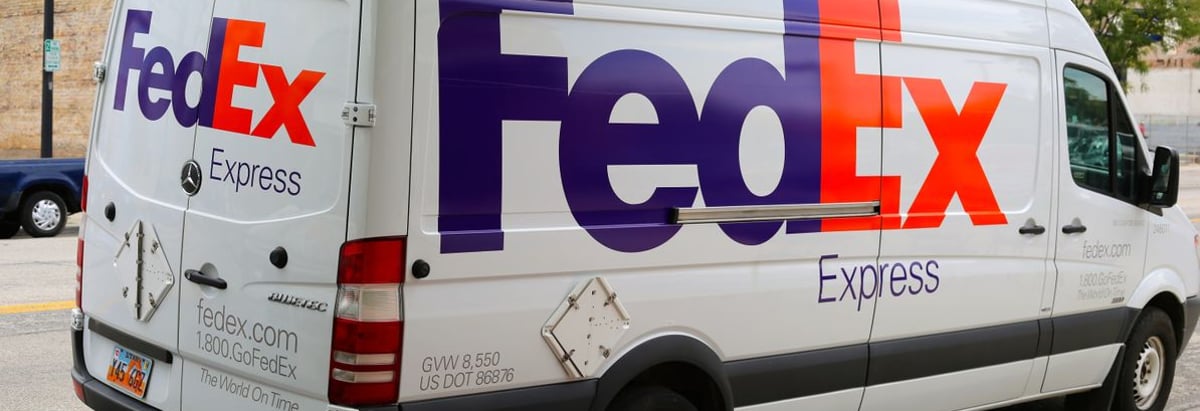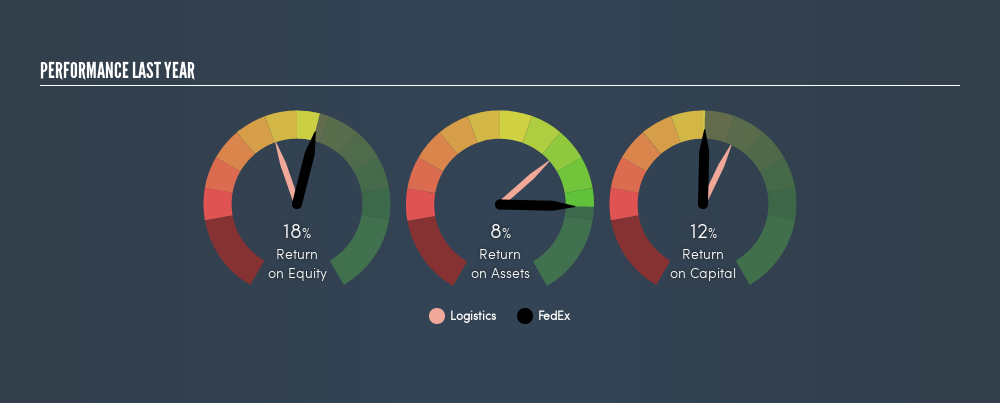
Today we are going to look at FedEx Corporation (NYSE:FDX) to see whether it might be an attractive investment prospect. Specifically, we'll consider its Return On Capital Employed (ROCE), since that will give us an insight into how efficiently the business can generate profits from the capital it requires.
Firstly, we'll go over how we calculate ROCE. Then we'll compare its ROCE to similar companies. And finally, we'll look at how its current liabilities are impacting its ROCE.
Return On Capital Employed (ROCE): What is it?
ROCE measures the 'return' (pre-tax profit) a company generates from capital employed in its business. Generally speaking a higher ROCE is better. In brief, it is a useful tool, but it is not without drawbacks. Renowned investment researcher Michael Mauboussin has suggested that a high ROCE can indicate that 'one dollar invested in the company generates value of more than one dollar'.
How Do You Calculate Return On Capital Employed?
Analysts use this formula to calculate return on capital employed:
Return on Capital Employed = Earnings Before Interest and Tax (EBIT) ÷ (Total Assets - Current Liabilities)
Or for FedEx:
0.12 = US$5.5b ÷ (US$54b - US$9.3b) (Based on the trailing twelve months to February 2019.)
So, FedEx has an ROCE of 12%.
View our latest analysis for FedEx
Does FedEx Have A Good ROCE?
One way to assess ROCE is to compare similar companies. Using our data, we find that FedEx's ROCE is meaningfully better than the 9.9% average in the Logistics industry. We consider this a positive sign, because it suggests it uses capital more efficiently than similar companies. Independently of how FedEx compares to its industry, its ROCE in absolute terms appears decent, and the company may be worthy of closer investigation.

When considering ROCE, bear in mind that it reflects the past and does not necessarily predict the future. ROCE can be misleading for companies in cyclical industries, with returns looking impressive during the boom times, but very weak during the busts. ROCE is, after all, simply a snap shot of a single year. Future performance is what matters, and you can see analyst predictions in our freereport on analyst forecasts for the company.
How FedEx's Current Liabilities Impact Its ROCE
Current liabilities are short term bills and invoices that need to be paid in 12 months or less. Due to the way ROCE is calculated, a high level of current liabilities makes a company look as though it has less capital employed, and thus can (sometimes unfairly) boost the ROCE. To counteract this, we check if a company has high current liabilities, relative to its total assets.
FedEx has total liabilities of US$9.3b and total assets of US$54b. Therefore its current liabilities are equivalent to approximately 17% of its total assets. Current liabilities are minimal, limiting the impact on ROCE.
Our Take On FedEx's ROCE
This is good to see, and with a sound ROCE, FedEx could be worth a closer look. FedEx looks strong on this analysis, but there are plenty of other companies that could be a good opportunity . Here is a free list of companies growing earnings rapidly.
If you are like me, then you will not want to miss this freelist of growing companies that insiders are buying.
We aim to bring you long-term focused research analysis driven by fundamental data. Note that our analysis may not factor in the latest price-sensitive company announcements or qualitative material.
If you spot an error that warrants correction, please contact the editor at editorial-team@simplywallst.com. This article by Simply Wall St is general in nature. It does not constitute a recommendation to buy or sell any stock, and does not take account of your objectives, or your financial situation. Simply Wall St has no position in the stocks mentioned. Thank you for reading.
About NYSE:FDX
FedEx
Provides transportation, e-commerce, and business services in the United States and internationally.
Established dividend payer and good value.
Market Insights
Community Narratives





